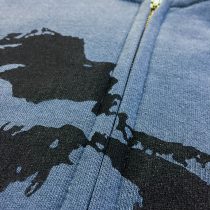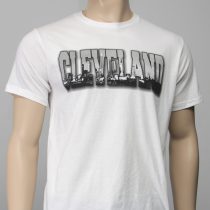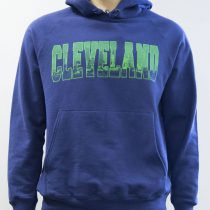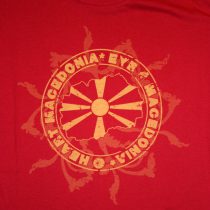Increase Quality To Improve Profits
As a contract apparel screen printer specializing in the promotional products industry for the past nine years, I have worked with many distributors and have observed a frequently repeated mistake: Distributors sell solely on price.
Too often, I am asked to quote the lowest possible cost to print on a garment that meets the barest minimum requirements. I fully understand the pressure distributors are under to be competitive and get the business. But I’d like to propose a different mindset to not only increase their overall profits, but also greatly increase customer satisfaction.
The argument for promoting quality over price is substantiated by studies in the automotive industry; namely, which brands make the most money. In an Automotive News article published in April 2016, the two most profitable car manufacturers in the world had profit margins of 16 percent (Porsche) and 15.5 percent (Ferrari). In contrast, Hyundai has a profit margin of seven percent and KIA is at 5.2 percent, according to their annual reports.
So, Hyundai is less than half and KIA is less than a third as profitable compared to the high-end brands. Walmart, a true giant that does not specialize in high-end products or any meaningful customer service experience, is operating on 3.1-percent profit margin.
Apple, a company in the cutthroat computer industry where margins are normally in the low single digits, operates at 23-percent profit. Who would you rather be: Walmart with $482 billion in sales, $14.7 billion in profit and 2.3 million employees; or Apple, with half the sales ($233 billion), four times the profit ($53 billion) and 1/20th the workforce (110,000 employees)?
Why Quality Should Always Be Top Of Mind
While many companies have a business model that competes on price, as it has often been said, price is a “race to the bottom.” I propose that the better strategy is to follow the example of Porsche and Apple and strive to offer the highest quality and, consequently, earn the highest profits.
When purchasing decorated apparel, quality is based on the garment and the decoration. The difference between an entry-level and a higher-end garment in basics like t-shirts and fleece is often less than $2 apiece. The t-shirt weight, which can range from 3.2 ounces to 6.1 ounces, and the fabric content (100-percent cotton, 50/50 or a tri-blend), are personal preferences.
However, there is a significant difference in the softness and comfort of a shirt that is crafted of 30 singles and ringspun cotton vs. a coarser yarn that is only carded (see side story on page 22).
If you are not showing your customers the difference using samples they can touch and feel to compare the cheapest and the slightly more expensive, you are not only doing a disservice to them, but you are cheating yourself out of a higher profit margin.
What many distributors may also not realize is the shirt quality also can dramatically impact how the print looks. A higher-quality shirt provides a better decorating canvas, resulting in a sharper, crisper print. It makes sense when you think that a coarser, less refined surface is not going to be as receptive as a smooth, flat one. When inks are laid down on a high-quality garment, the printer can use a thinner layer of ink making it more breathable, hold finer detail in the design, achieve more vibrant colors and come closer to matching a specific color.
When printing on dark colors, it is necessary to create a white foundation first and then print the design on top. This increases the number of ink layers and, consequently, increases the heaviness of the hand. It is less breathable and less comfortable to wear. However, for a slightly higher cost, the printer can use a discharge technique. This process bleaches the dark color from the shirt and replaces it with the design. The result is that the design feels like it is part of the garment. It has a much softer hand and a much higher-perceived quality.
At high-end department stores like Saks Fifth Avenue you will find discharge printed shirts for as much as $50. Being able to offer Saks quality at a fraction of the price allows you to stand out from the competition. It also means the customer is happier and more excited about the purchase. In turn, this builds a more loyal, long-term client relationship because quality is the exception, not the rule.
When promotional product distributors act as consultants, they are in tune with their clients’ marketing goals and business principles. They deliver solutions that further the goals of the businesses they are servicing and are an irreplaceable cog in that machine. They take into account the average age of the garment wearer, their socio-economic status, cultural trends and so on. By knowing these and the goals of the campaign, the distributor can either design or suggest changes to the graphic to align it with the final goals.
Ideas To Increase Perceived Value Of The Product
For example, a promoter of a 5K run needs shirts. Because these are usually donated, the organizer looks for the least expensive option. The end result is a lower-quality shirt that comes apart after a few washings and does not get worn. A more successful strategy is to suggest a significantly better shirt and limit the number being given away.
Even if the organizer chooses not to spend any more money by offering a limited number of shirts that are only available by early signup, if the shirt is high quality, it will be coveted by the participants of that race and others who see it. The following year, the shirt will be remembered, driving more early signups. Additional shirts can be sold onsite, further increasing the funds raised.
Here’s an example illustrating the value of using a higher-quality shirt with a pricier decorating technique yielding a much better end product with higher perceived value:
Let’s start with a quality 100-percent performance polyester moisture-wicking garment, which is the right choice for an athletic event. It is decorated with a thin, flexible, durable silicone reflective ink. Since silicone moves with the fabric rather than fighting it, it is more comfortable to wear.
Durability is key for a garment that might go through the wash several times per week and is expected to last for years. When the client understands why they may need to spend a little more for a high-quality garment, they get a product that is better than anything else the participants have at home, and it will be their first choice when going out for a run. The icing on the cake is the reflective ink, which increases the safety for the wearer and provides a discussion point that will help promote next year’s event.
Some other options that can increase the perceived value without breaking the bank (ranging from free to 50 cents per garment) are printing over zippers, adding halftones, applying discharge inks, special effects and so on. These charges can easily be marked up 100 percent without driving up the overall cost significantly. If properly applied, it is a win-win for the consultant and the end user.
Years ago, our company switched from trying to offer the lowest price to providing the best solutions. As one of our customers said, “You never have to justify quality,” and I am finding it to be true. Our prices are higher, yet we are not lacking clients. When the goals of the marketing campaign are the primary objective, price is less important and increased margins can be achieved.
Providing better value, not a lower price, will have customers return singing praises. It has been my experience that our clients are happier than their competitors, have more satisfied customers and are getting paid more, too.
Pierre John Jamnicky, owner of Blue Moon Promotional in Cleveland, Ohio, is a serial entrepreneur. He runs an award-winning contract shop specializing in textile screen printing for the promotional products industry, is a speaker/instructor at the Imprinted Sportswear Shows and is co-chair of the Specialty Graphic Imaging Association (SGIA) Garment Decorating Committee. Outside of work, Jamnicky is an award-winning photographer, has served in two branches of the military, has led mountain-climbing expeditions, was a professional skydiver and has competed in sailing regattas around the world.
What Makes One T-Shirt Better Than Another?
The softness and printability of a cotton t-shirt greatly depend on how it’s processed. There are two primary types of yarn used to make t-shirts: open end and ring spun. The difference between the two comes from the yarn-spinning method.
Open-end cotton yarns typically use shorter-length cotton fibers and yield a fabric that has a drier or crisper hand. Open-end yarns tend to be coarser, more loosely bound and with rougher thread. Ring-spun yarns have longer, staple-length fibers that require two steps in the manufacturing process versus one step used for open-end yarn. This increases the labor required, and therefore is one factor in their higher price.
There are two techniques used to process yarn: carding and combing. Carding is just like it sounds: moving a card over the yarns. It doesn’t really align the threads, and it doesn’t eliminate the shorter, roving fibers. Think of it in terms of combing your hair with a comb or a card. The comb is going to sink in and align the strands so you’ll have a smoother, cleaner look as opposed to a card that is just skimming the top. Combing also breaks the fibers apart, adding to the softness of the garment.
The gauge or thickness of the yarn is referred to as “singles.” The higher the number, the finer the yarn. So, 30 singles is thinner than 20 singles. The finer the yarns used, the smoother the surface of the fabric and the softer to the touch.
Four Low-Cost Decorating Ideas
 An add-on that can enhance the look of a decorated garment for a nominal increase in cost is printing over the zipper. This offers the potential of featuring a more eye-catching design increasing the perceived value of the product and offering greater customer satisfaction.
An add-on that can enhance the look of a decorated garment for a nominal increase in cost is printing over the zipper. This offers the potential of featuring a more eye-catching design increasing the perceived value of the product and offering greater customer satisfaction.
 Through the use of halftones, it’s possible to create gradients of the same color, giving the print a multicolor look while still only using one color. As each color costs more when screen printing, this is a low-cost way to create a more eye-catching design.
Through the use of halftones, it’s possible to create gradients of the same color, giving the print a multicolor look while still only using one color. As each color costs more when screen printing, this is a low-cost way to create a more eye-catching design.

This design is an example of a discharge print. When screen printing on dark colors, a white underbase must be laid down first as a foundation for the design. This layer also adds weight to the ‘hand’ of the shirt. An alternative process uses discharge inks, which bleach out the color of the shirt, leaving a white or neutral area for the design to be printed on. Because no underbase is needed, the shirt has a softer hand. In quantities between 48 and 200 pieces, discharge printing can lower the overall cost of the product.
 This garment uses several techniques to lower the cost while increasing the attractiveness of the overall design. Using a distressed effect eliminates the need for a white underbase, which would normally add to the cost of the print and create a heavier ‘hand.’ The process also allows for a thinner deposit of ink, which makes for a softer-feeling print. Halftones are also used to create gradients of the single color, lending a multicolor look without the cost of additional screens.
This garment uses several techniques to lower the cost while increasing the attractiveness of the overall design. Using a distressed effect eliminates the need for a white underbase, which would normally add to the cost of the print and create a heavier ‘hand.’ The process also allows for a thinner deposit of ink, which makes for a softer-feeling print. Halftones are also used to create gradients of the single color, lending a multicolor look without the cost of additional screens.

